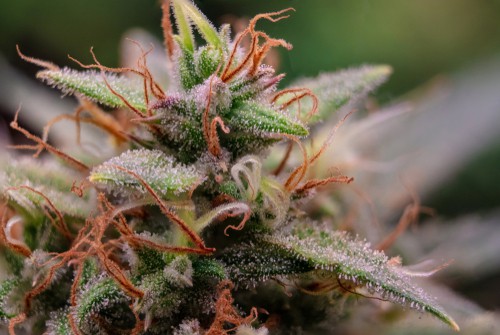When growing cannabis, it’s essential to keep a close eye on the development of the buds. One of the most common issues that growers face is when the bud hairs turn brown early. This can be concerning, as it may indicate a problem with the plant or the growing environment.
Understanding bud hairs is crucial to identifying the early browning of buds. Bud hairs, also known as pistils, are the small, hair-like structures that protrude from the buds. These hairs are responsible for catching pollen during the fertilization process, and they play a vital role in the development of the plant.
Bud hairs turning brown early may indicate that the plant is experiencing stress or that it is not developing correctly. There are several potential causes of early browning, including environmental factors, genetics, and hermaphroditism.
Identifying the cause of the problem is crucial to finding a solution and ensuring a successful harvest.
Key Takeaways
- Early browning of bud hairs is a common issue that cannabis growers face.
- Understanding the role of bud hairs and the potential causes of early browning is crucial to identifying and resolving the problem.
- Online communities, visual aids, and preventive measures can be helpful resources for growers looking to prevent early browning of their cannabis buds.
Also read:
- Birds Nest Spruce Turning Brown
- Bird’s Nest Fern Turning Brown?
- Bird of Paradise Stems Turning Brown
Understanding Bud Hairs
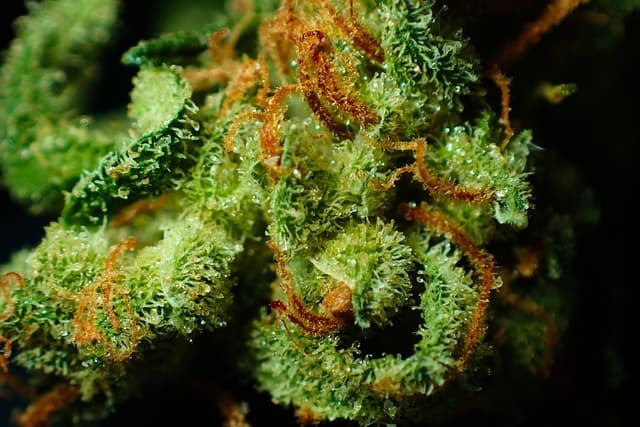
Bud hairs, also known as pistils, are the female reproductive organs of a cannabis plant. These hair-like structures emerge from the calyxes, which are the small, leafy structures that make up the buds.
During the flowering stage, the pistils play a crucial role in the reproduction of the plant. They are responsible for capturing and holding onto pollen from male plants, which then fertilizes the female plant and allows it to produce seeds.
However, in the case of a female plant that has not been pollinated, the pistils will continue to grow and change color over time. Initially, they are white and stick straight out of the calyxes. As the plant matures, the pistils will begin to curl in and change color.
The color change of the pistils is an important indicator of the plant’s maturity. In the early stages of flowering, the pistils will be white and will gradually turn to a light orange or brown color. This indicates that the plant is approaching maturity and is ready for harvest.
It is important to note that not all strains of cannabis will have the same color pistils. Some strains may have pistils that are naturally orange or brown, while others may have pistils that remain white throughout the flowering stage.
In some cases, the pistils may turn brown or orange prematurely. This can be caused by a variety of factors, such as stress, nutrient deficiencies, or pests. If the pistils are turning brown or orange much earlier than expected, it may be a sign that something is wrong with the plant and it should be inspected for issues.
Signs of Early Browning
When buds are still in their early flowering stage, it can be alarming to see the hairs on the buds turn brown. This can indicate a problem with the plant or growing environment. Here are some signs to look out for when identifying early browning.
1. Color Changes
The first sign of early browning is, of course, the change in color of the hairs on the buds. The hairs on the buds will turn from white to orange to brown. This can happen due to a variety of reasons, such as high temperatures, rough handling, or pollination.
2. Leaf Condition
Another sign of early browning is the condition of the leaves. If the leaves are turning brown and crispy, it could be a sign of nutrient deficiency or heat stress. If the leaves are yellowing and falling off, it could be a sign of overwatering or root rot.
3. Temperature Effects
Temperature can also play a role in early browning. High temperatures can cause the buds to dry out and turn brown prematurely. On the other hand, low temperatures can slow down the growth of the buds and cause them to turn brown.
It is important to monitor the temperature and humidity levels in the growing environment to ensure optimal growth and prevent early browning. Using a thermometer and hygrometer can help growers keep track of these levels.
Bud Hairs Turning Brown Early
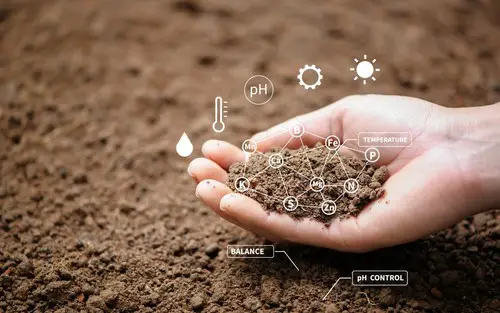
Browning of bud hairs can be caused by various factors. In this section, we will discuss some of the potential causes of browning, including pH imbalance, heat exposure, and nutrient burn.
1. pH Imbalance
One of the potential causes of browning of bud hairs is a pH imbalance in the soil or hydroponic system. If the pH level is too high or too low, it can affect the plant’s ability to absorb nutrients properly.
This can cause nutrient deficiencies or toxicities, which can lead to browning of bud hairs. It is essential to maintain a proper pH level to ensure the plant’s healthy growth and development.
2. Heat Exposure
Heat exposure is another potential cause of browning of bud hairs. High temperatures can cause stress to the plant, which can affect its ability to absorb nutrients properly.
This can lead to nutrient deficiencies, which can cause browning of bud hairs. It is essential to maintain a proper temperature range to ensure the plant’s healthy growth and development.
3. Nutrient Burn
Nutrient burn is another potential cause of browning of bud hairs. This occurs when the plant receives too many nutrients, causing a buildup of salts in the soil or hydroponic system.
This can lead to nutrient toxicity, which can cause browning of bud hairs. It is essential to follow the recommended nutrient dosage and avoid overfeeding the plant.
Identifying Hermaphroditism
Hermaphroditism is a condition where a cannabis plant develops both male and female reproductive organs. This can happen due to various reasons, including stress, genetics, or environmental factors.
Identifying hermaphroditism is crucial for growers as it can lead to pollination of female plants, resulting in lower yields and lower-quality buds. In this section, we will discuss how to spot male flowers and pollination signs in hermaphrodite cannabis plants.
Spotting Male Flowers
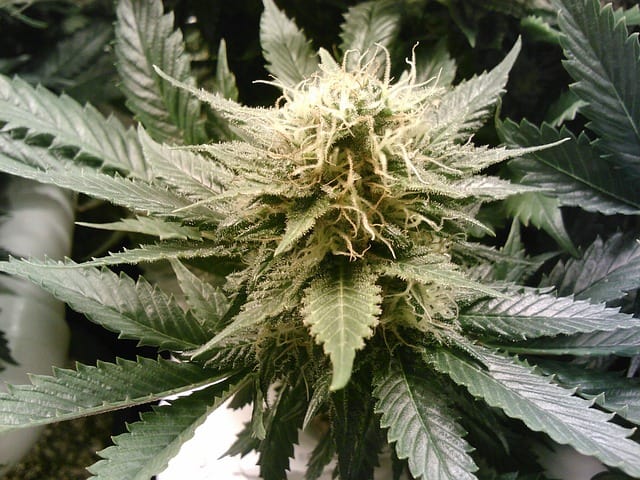
One of the primary signs of hermaphroditism is the development of male flowers. These flowers can look like small sacs or balls and are usually found near the nodes of the plant.
They can also grow in clusters and are typically green in color. Male flowers can release pollen, which can pollinate female plants and lead to the development of seeds.
To prevent pollination, growers must remove male flowers as soon as they are spotted. This can be done by cutting off the entire branch or by using tweezers to pluck individual flowers. It is essential to remove all male flowers as even a single flower can release enough pollen to pollinate an entire grow room.
Pollination Signs
If a hermaphrodite plant is not detected early, it can lead to pollination of female plants. Pollination signs can include the development of seeds, which can be seen as small, dark spots on the buds. Pollinated buds can also turn brown early and have a reduced potency and flavor.
Growers can prevent pollination by removing hermaphrodite plants from the grow room as soon as they are detected. It is also essential to inspect plants regularly for any signs of hermaphroditism and to remove any male flowers that are spotted.
Role of Genetics in Bud Browning
The genetics of a cannabis plant can play a significant role in the browning of bud hairs. Certain strains are more prone to early browning than others due to their genetic makeup. This can be due to a variety of factors, including the plant’s origin and the specific traits bred into it.
For example, some sativa strains may be more susceptible to early browning due to their genetic makeup. Sativa strains are typically known for their longer flowering times, and as a result, they may be more likely to experience bud browning before they are ready for harvest.
On the other hand, some indica strains may have genetics that make them less prone to early browning. Indica strains are typically known for their shorter flowering times, and as a result, they may be less likely to experience bud browning before they are ready for harvest.
It’s important to note that while genetics can play a role in bud browning, it is not the only factor. Environmental factors such as temperature, humidity, and light can also contribute to the browning of bud hairs.
Additionally, it’s worth noting that some strains may simply be more prone to early browning than others, regardless of their genetic makeup. This is why it’s important to research and choose strains that are known for their resistance to early browning.
Harvesting and Maturing Process
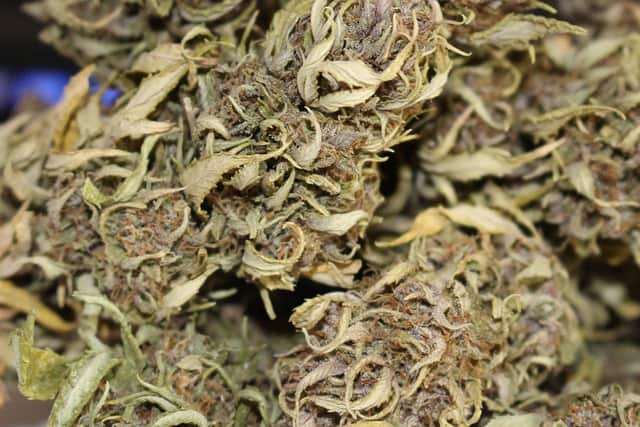
When it comes to harvesting cannabis, timing is everything. One of the most important factors to consider is the maturity of the buds. While it’s normal for the hairs on cannabis buds to turn brown as they mature, it’s important to know when it’s time to harvest.
The maturing process of cannabis buds is usually determined by the color and appearance of the trichomes, which are the small, crystal-like structures on the buds. As the buds mature, the trichomes change color from clear to cloudy to amber.
When most of the trichomes have turned cloudy and some have turned amber, it’s usually a good time to harvest.
It’s important to note that harvesting too early can result in buds that are less potent and have a lower yield. On the other hand, harvesting too late can result in buds that are overripe and have a lower quality.
When harvesting, it’s important to handle the buds gently to avoid damaging the trichomes. The buds should be trimmed and dried in a cool, dark place with good ventilation. This process can take anywhere from a few days to a few weeks, depending on the humidity level and temperature.
Preventive Measures and Solutions
1. Proper Watering
One of the most common reasons for bud hairs turning brown early is overwatering or underwatering. It is essential to maintain proper watering to prevent this issue. The grower should water the plant when the top inch of soil feels dry to the touch.
Overwatering can lead to root rot, which can cause the plant to wilt, and the bud hairs to turn brown. On the other hand, underwatering can cause the plant to dry out, leading to the same issue.
To ensure proper watering, the grower can use a moisture meter or lift the pot to check its weight. If it feels light, it is time to water the plant. If it feels heavy, the soil is still moist, and the grower should wait a day or two before watering.
2. Humidity Control
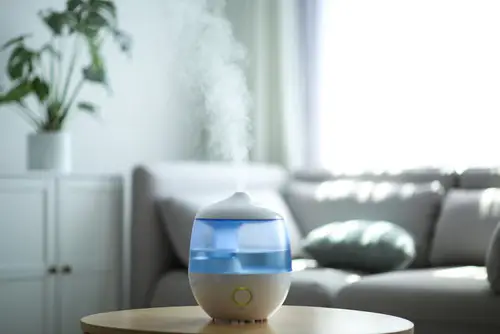
High humidity levels can also cause bud hairs to turn brown early. The ideal humidity level for flowering cannabis plants is between 40% to 50%. Anything higher than that can create a breeding ground for mold and mildew, which can damage the plant and cause the bud hairs to turn brown.
To control humidity levels, the grower can use a dehumidifier or an air conditioner. They can also use fans to increase airflow and reduce humidity levels. It is also essential to monitor humidity levels regularly using a hygrometer.
3. Feeding and Soil Management
Feeding the plant with the right nutrients is crucial for healthy growth and to prevent bud hairs from turning brown early. The grower should use high-quality nutrients and follow the recommended feeding schedule. Overfeeding or underfeeding can cause nutrient burn or nutrient deficiency, which can lead to brown bud hairs.
Soil management is also important. The grower should use high-quality soil that is rich in nutrients and has good drainage. They should also monitor the pH levels of the soil regularly. If the pH levels are too high or too low, it can affect nutrient uptake and cause brown bud hairs.
4. Runoff
Monitoring runoff is essential to prevent nutrient buildup and ensure proper nutrient uptake. The grower should water the plant until water runs out of the drainage holes.
They should then measure the pH and nutrient levels of the runoff. If the pH levels or nutrient levels are off, the grower should adjust the feeding schedule or flush the soil to remove excess nutrients.
By following these preventive measures and solutions, the grower can ensure healthy growth and prevent bud hairs from turning brown early.
Visual Aids for Identification
One of the easiest ways to identify if the bud hairs are turning brown early is to look for visual cues. Here are a few visual aids that can help in identifying if the bud hairs are turning brown too early:
1. Pictures
Pictures can be a great way to identify if the bud hairs are turning brown too early. By taking pictures of the buds at different stages of growth, growers can compare the pictures to identify any changes in the buds. Pictures can also be used to show the differences between healthy buds and buds affected by brown hairs.
2. White Hairs
White hairs are a common sight on healthy buds, and they usually turn brown as the buds mature. However, if the white hairs turn brown too early, it can indicate a problem with the plant. Growers should keep an eye out for white hairs turning brown prematurely, as it can be a sign of bud rot or mold.
3. Magnification
Using a magnifying glass or microscope can help growers identify any changes in the buds that are not visible to the naked eye. By examining the buds closely, growers can spot any signs of brown hairs or other problems with the buds.
Understanding Pots and Grow Environment

When it comes to growing cannabis, the pot or container used can have a significant impact on the health and growth of the plant. Pots come in various sizes, materials, and shapes, and each of these factors can affect the plant’s root development, nutrient uptake, and overall health.
One of the most important factors to consider when choosing a pot is its size. If the pot is too small, the plant’s roots can become cramped and stunted, leading to poor nutrient uptake and slow growth. On the other hand, if the pot is too large, the plant may struggle to take up water and nutrients, leading to root rot and other issues.
The material of the pot can also affect the plant’s growth. Plastic pots are lightweight and easy to move around, but they can also retain heat and moisture, which can lead to fungal growth and other issues.
Fabric pots are becoming increasingly popular among growers, as they allow for better drainage and aeration, which can lead to healthier root development.
The grow environment is another crucial factor to consider when growing cannabis. The temperature, humidity, and lighting can all affect the plant’s growth and health. High humidity levels can lead to mold and other fungal growth, while low humidity can cause the plant to dry out and wilt.
In addition to the grow environment, the health of the plant’s fan leaves can also provide valuable insights into its overall health. Yellowing or browning of the fan leaves can be a sign of nutrient deficiencies, overwatering, or other issues.
Regular monitoring of the plant’s leaves can help growers catch issues early and take corrective action before they become more severe.
Role of Seeds in Cannabis Growth
Seeds play a crucial role in the growth of cannabis plants. They contain all the genetic information required for the plant to grow and produce buds. However, not all seeds are created equal, and the quality of the seed can have a significant impact on the growth and yield of the plant.
When selecting seeds for planting, it is important to choose high-quality, viable seeds. Viable seeds are those that are mature, healthy, and have a high germination rate. Seeds that are immature, damaged, or have a low germination rate may not produce healthy plants or may not germinate at all.
Once the seeds are planted, they go through a process called germination, where they sprout and begin to grow into seedlings. During this stage, it is important to provide the seedlings with the right amount of water, nutrients, and light to ensure healthy growth.
As the seedlings mature, they enter the vegetative stage, where they grow leaves and stems. During this stage, it is important to provide the plants with the right balance of nutrients, light, and water to promote healthy growth and prevent nutrient deficiencies.
Finally, the plants enter the flowering stage, where they begin to produce buds. During this stage, it is important to provide the plants with the right nutrients and light to promote healthy bud growth.
Frequently Asked Questions
What week do buds typically start to swell?
Buds typically start to swell during the third or fourth week of flowering. This is when the plant begins to focus its energy on producing flowers, and the buds will start to grow in size and density.
Why are my pistils turning brown early?
There are a few reasons why pistils may turn brown early. One common cause is stress, such as overwatering or underwatering, high temperatures, or nutrient deficiencies. Another reason may be genetic, as some strains are known to turn brown earlier than others.
Should I harvest when the pistils turn brown?
Not necessarily. While brown pistils can be a sign that the plant is reaching maturity, it is not the only factor to consider when harvesting. It is important to also look at the trichomes on the buds, which should be milky or amber in color, depending on the desired effect.
What causes pistils to turn orange early on buds?
Pistils may turn orange early due to genetic factors, stress, or environmental conditions. It is important to identify the cause of the issue and address it accordingly to prevent further damage to the plant.
How can I prevent my buds from turning brown?
To prevent buds from turning brown early, it is important to maintain a consistent environment for the plant, including proper watering, temperature, and nutrient levels.
It is also important to choose strains that are less likely to turn brown early, and to monitor the plant closely for any signs of stress or damage.
Is it normal for bud hairs to turn brown early in flowering?
While it is not uncommon for bud hairs to turn brown early in flowering, it is not necessarily normal. Brown hairs can be a sign of stress or damage to the plant, and it is important to identify the cause of the issue and address it accordingly to prevent further damage.

Hey, I’m Lisa and I’ve been an avid gardener for over 30 years. I love writing, talking and living in the garden! Feel free to connect with me on my socials below

